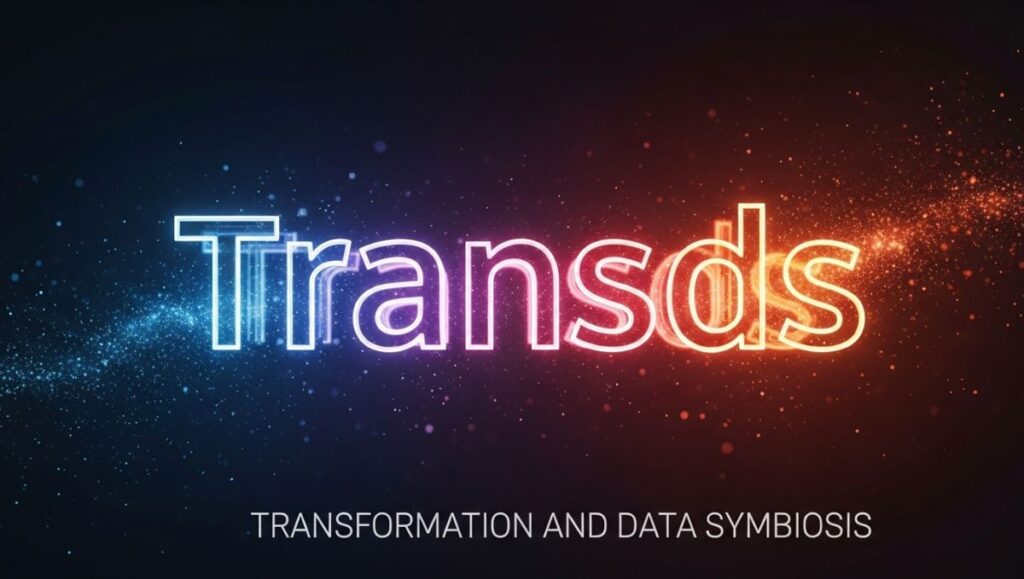In today’s rapidly evolving technological world, where human experience merges seamlessly with artificial intelligence, new concepts are emerging to describe our relationship with data, identity, and connectivity. One such concept is Transds, a term that captures the fluid intersection between transformation and digital systems.
At its core, Transds represents the transition of human, cultural, and informational identities into digital forms — a process that reshapes how we create, share, and exist in the interconnected world. It’s not just about technology; it’s about evolution, adaptability, and the digital expression of change.
Defining Transds: Transformation Through Digital Systems
The term Transds combines two key ideas:
-
“Trans” — from the Latin root meaning across, beyond, or through, symbolizing movement, transition, and transformation.
-
“DS” — standing for Digital Systems or Data Structures, referring to the frameworks that process and organize information.
Together, Transds can be interpreted as “transforming through digital systems” — the process of using technology not just as a tool, but as a medium of metamorphosis.
This concept embodies the way individuals, organizations, and societies evolve through data — adapting behaviors, beliefs, and identities within digital ecosystems. In essence, Transds is both a philosophy and a mechanism for digital transformation.
The Origin of the Concept: From Data to Consciousness
While “Transds” is a modern expression, the ideas behind it have been developing for decades. As early as the 1960s, computer scientists and philosophers like Norbert Wiener and Marshall McLuhan predicted a world where information would become the core of human experience.
In the 21st century, with the rise of artificial intelligence, big data, and virtual reality, that vision became reality. Digital systems no longer simply store data — they shape human consciousness.
Transds emerges from this cultural and technological moment as a concept that represents symbiosis between human and digital evolution. It reflects how identity, emotion, and creativity are now processed within systems once reserved for computation alone.
Transds and the Architecture of Data
From a technical perspective, Transds reflects how data structures enable transformation. Every digital interaction — from a social media post to a 3D simulation — is built upon complex systems that replicate and reconfigure information.
These systems are inherently trans-formative:
-
Databases evolve as they learn.
-
AI models update as they receive new input.
-
Algorithms mold themselves to user behavior.
This adaptability lies at the heart of Transd. It symbolizes living data, systems that do not merely compute but co-evolve with human interaction.
The concept of Transds reframes technology as a mirror of human change — one that reflects not only progress but also our psychological, ethical, and creative transformations.
The Human Side of Transds: Digital Identity and Fluidity
Beyond its technical foundation, Transds carries deep human significance. It speaks to the way we transform ourselves through digital spaces — how our identities, emotions, and experiences are molded by interaction with data and technology.
Online, identity is no longer static. People reconstruct and redefine themselves through social media profiles, avatars, and creative content. This continual reinvention — this digital metamorphosis — is the essence of the Transds mindset.
In this context, Transds becomes a metaphor for personal evolution in the digital age:
-
Transforming through self-expression online.
-
Adapting to algorithmic influence.
-
Balancing authenticity and performance in virtual identity.
As data flows through us and we through data, Transds captures the coexistence of human emotion and digital logic.
Transds and Artificial Intelligence
AI technologies epitomize the principles of Transds. Machine learning systems literally transform through data — adapting their internal states based on new information.
But beyond function, AI represents a deeper philosophical shift: the idea that intelligence itself can be transformed and distributed across digital systems.
In this light, Transds explores the mutual evolution between human and machine intelligence. Humans train machines, and machines reshape human behavior in return. Search engines, recommendation systems, and generative models like GPTs are all examples of Transds in action — where human creativity and computational logic continuously merge.
This relationship challenges us to rethink creativity, authorship, and consciousness in a world where transformation is constant and data-driven.
Digital Transformation in Society: The Transds Paradigm
Transd also provides a framework for understanding how societies evolve through digital systems. Governments, corporations, and communities now rely on data to make decisions, forecast behavior, and design the future.
This data-driven transformation affects every sector:
-
Economy: Blockchain and digital finance reshape trust and exchange.
-
Education: Virtual learning environments adapt to student behavior in real time.
-
Healthcare: Predictive analytics transforms how diseases are detected and treated.
The Transd paradigm views these developments not as isolated innovations but as part of a larger evolutionary process — a digital ecosystem constantly re-molding itself through information flow.
Transds and the Aesthetics of Change
Beyond its technical and social meanings, Transds has an artistic and philosophical aesthetic. It celebrates fluidity, adaptability, and transformation — principles increasingly reflected in contemporary design, digital art, and creative media.
Visual artists, musicians, and filmmakers are embracing Transds-inspired approaches:
-
Using generative art to explore algorithmic creativity.
-
Designing interactive environments that evolve with user input.
-
Creating immersive narratives that shift and adapt dynamically.
In this artistic sense, Transds becomes a symbol of modern creativity — where form is never final, and every act of creation invites transformation.
Ethical Dimensions of Transds
While Transds celebrates transformation, it also raises critical questions about ethics, privacy, and control. When human lives are intertwined with digital systems, who decides how transformation occurs?
Data manipulation, algorithmic bias, and digital surveillance all reveal the darker side of Transd — when transformation is imposed rather than chosen.
Thus, ethical Transd practices demand:
-
Transparency in how data systems operate.
-
Equity in digital representation and access.
-
Consent in data use and transformation.
In this way, Transd is not only about evolution but about responsible transformation — ensuring that digital progress aligns with human dignity and freedom.
The Psychology of Transds: Adapting Minds for a Digital Future
From a psychological standpoint, Transds reflects how human cognition adapts to constant digital change. The internet has rewired how we think, learn, and connect. Attention spans, emotional responses, and social behaviors are all transformed by interaction with digital environments.
In the Transds framework, this isn’t seen as loss but as adaptation. Human beings are inherently plastic — capable of learning new systems and emotional languages.
Transds celebrates this adaptability as a sign of resilience. It suggests that our capacity to integrate digital systems into daily life is not just technological but deeply human — a reflection of our innate ability to evolve.
Transds and the Future of Digital Humanity
Looking ahead, Transds points toward a future where the boundaries between organic and digital life blur entirely. Advances in bio-digital interfaces, neural technology, and synthetic intelligence may allow humans and machines to merge more deeply than ever before.
In this future, Transds could represent:
-
The fusion of biological and digital memory.
-
The evolution of consciousness through data symbiosis.
-
The emergence of hybrid identities that exist across physical and virtual dimensions.
Rather than fearing this transformation, the Transd philosophy invites us to approach it with awareness and creativity — to see digital evolution not as replacement but as integration.
Conclusion
In the grand story of human progress, Transds stands as a symbol of transformation, adaptation, and co-evolution. It captures the essence of how technology reshapes identity, culture, and consciousness in the digital age.
Through the lens of Transds, we understand that change is not an event but a process — one that unfolds through constant interaction with data and systems. It is a philosophy of becoming, grounded in the belief that transformation is the natural state of both humans and technology.
As we move deeper into the 21st century, embracing the Transds mindset means recognizing that digital evolution is not separate from human experience — it is human experience, refracted through the lens of infinite possibility.






